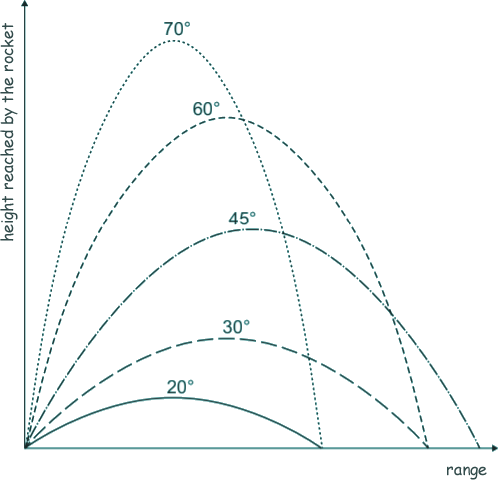GCSE Questions: Forces Q21. The diagram shows the forces acting on a model air-powered rocket just after it has been launched vertically upwards.
(a)
[2 marks]
[1 mark] (b) The speed of the rocket just after being launched is 12 m/s. The mass of the rocket is 0.05 kg.
[3 marks]
[1 mark]
Gravitational field strength = 10 N/kg. [2 marks] (iv) The sketch graphs below show four velocity–time graphs.
Taking air resistance into account, which sketch graph, A, B, C or D, shows how the velocity of the rocket changes as it falls from the maximum height it reached until it just hits the ground? [1 mark] (c) The rocket can be launched at different angles to the horizontal. The horizontal distance the rocket travels is called the range. The diagram below shows the paths taken by the rocket when launched at different angles - air resistance has been ignored.
What pattern links the angle at which the rocket is launched and the range of the rocket? [2 marks] [12 Marks TOTAL] |
Follow me...
|








